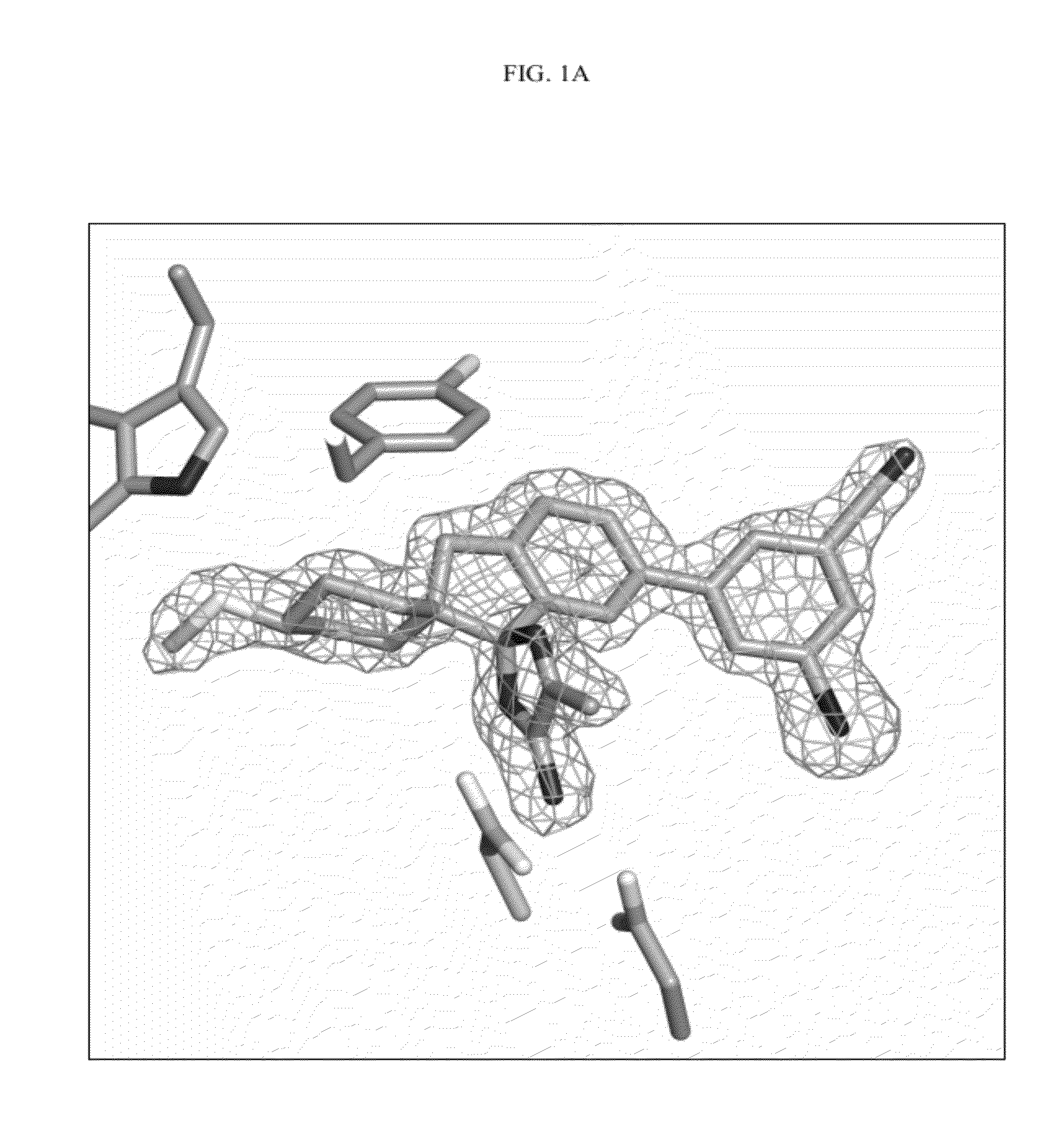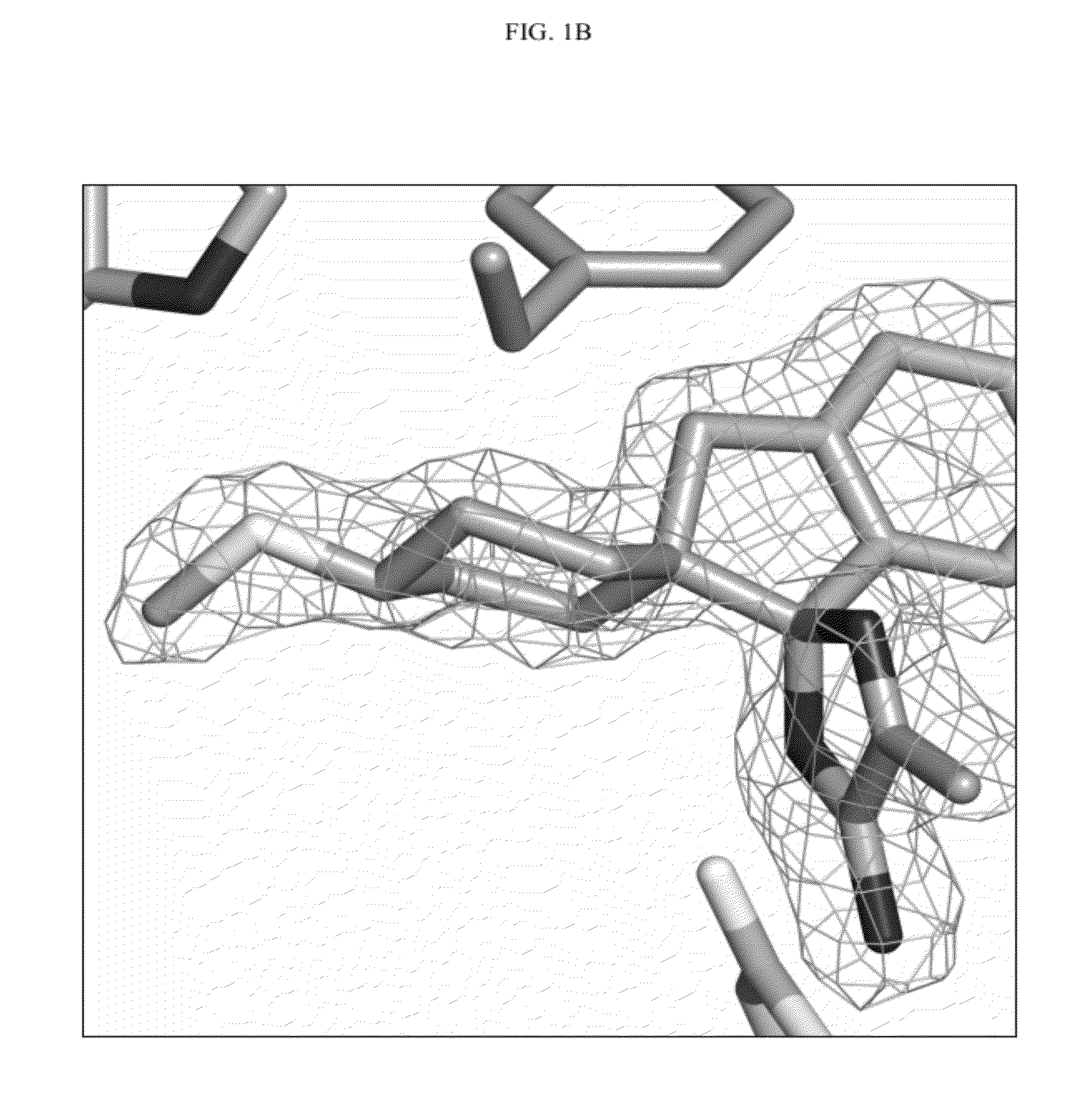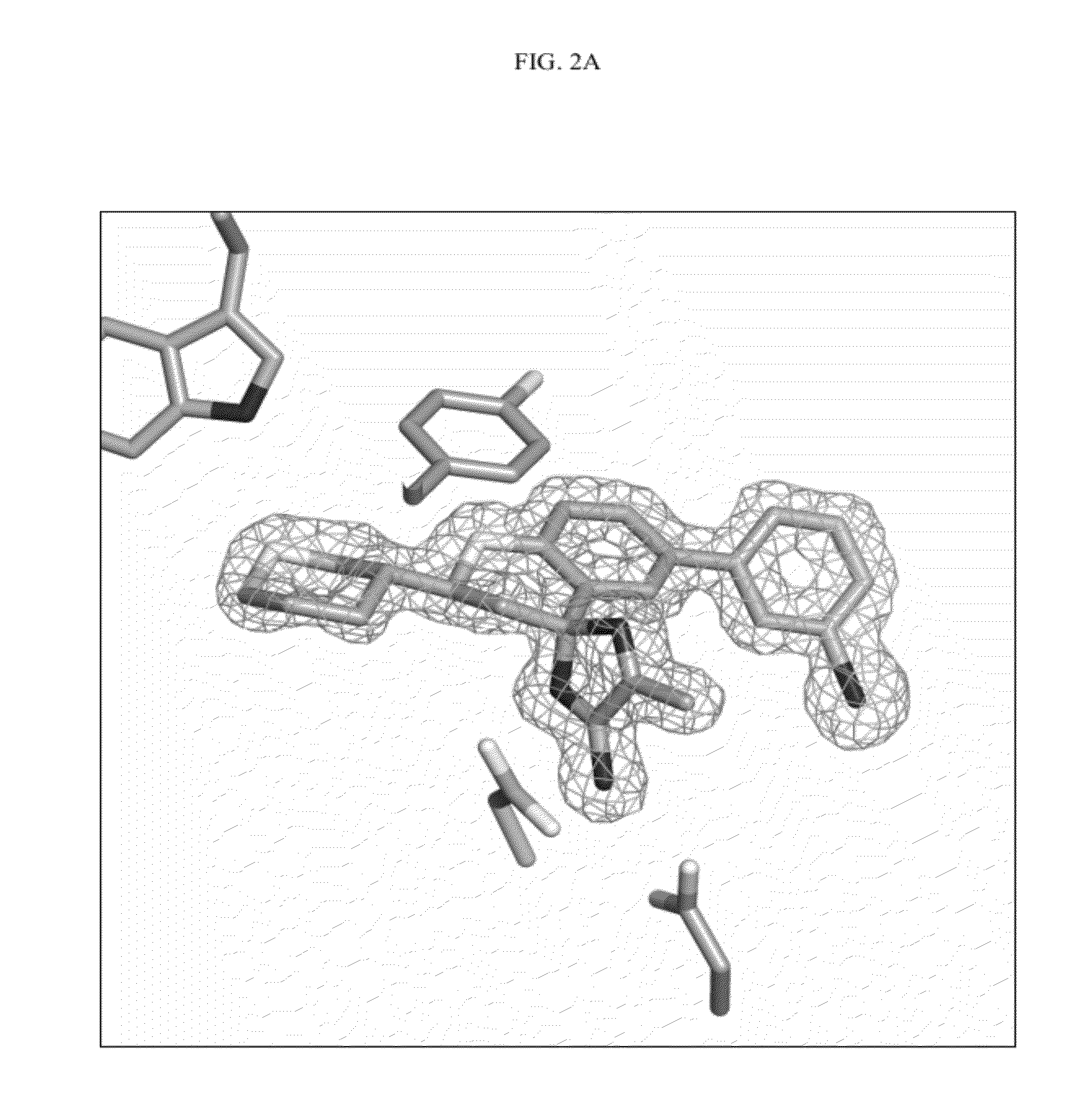Compounds and their use as BACE inhibitors
a technology of compound and bace inhibitor, which is applied in the direction of group 3/13 element organic compounds, drug compositions, cardiovascular disorders, etc., can solve the problems of a multitude of deleterious effects on neuronal function
- Summary
- Abstract
- Description
- Claims
- Application Information
AI Technical Summary
Benefits of technology
Problems solved by technology
Method used
Image
Examples
example 1
6-(3,5-Dichlorophenyl)-5′-methylspiro[chroman-4,2′-imidazol]-4′-amine
[0587]
[0588]6-Bromo-5′-methylspiro[chroman-4,2′-imidazol]-4′-amine (73 mg, 0.25 mmol, Intermediate 4), 3,5-dichlorophenylboronic acid (95 mg, 0.50 mmol) and K2CO3 (83 mg, 0.60 mmol) were mixed in dioxane (2 mL) and degassed by passing nitrogen through for 5 min. Then (1,1′-bis(diphenyl-phosphino)ferrocene)-dichloropalladium(II) (10 mg, 0.01 mmol) was added and the mixture was heated in a sealed vial at 100° C. overnight. (1,1′-Bis(diphenylphosphino)ferrocene)-dichloro-palladium(II) (10 mg, 0.01 mmol) was added and heating continued in a microwave oven at 130° C. for 2×1 h. Purification by preparative HPLC gave the title compound (13 mg, 14% yield): 1H NMR (400 MHz, CDCl3) δ ppm 2.04-2.30 (m, 2 H), 2.38 (s, 3 H), 4.50-4.69 (m, 2 H), 4.88 (br s, 2 H), 6.69 (s, 1 H), 6.98 (d, 1 H), 7.22-7.35 (m, 4 H); MS (ES+) m / z 360 [M+H]1.
example 2
6-(5-Chloropyridin-3-yl)-5′-methylspiro[chroman-4,2′-imidazol]-4′-amine
[0589]
[0590]6-Bromo-5′-methylspiro[chroman-4,2′-imidazol]-4′-amine (60 mg, 0.20 mmol, Intermediate 4), 5-chloropyridin-3-ylboronic acid (62 mg, 0.40 mmol) and 2M K2CO3 (aq, 0.20 mL, 0.41 mmol) were mixed in dioxane (5 mL) and degassed by passing nitrogen through for 5 min. Then (1,1′-bis(diphenylphosphino)ferrocene)-dichloropalladium(II) (8 mg, 10 μmol) was added and the mixture was heated in a microwave oven at 130° C. for 1 h. Purification by preparative chromatography HPLC gave the title compound (42 mg, 63% yield): 1H NMR (400 MHz, CDCl3) δ ppm 2.17 (m, 2 H), 2.37 (s, 3 H), 4.59 (m, 2 H), 5.04 (br s, 2 H), 6.73 (d, 1 H), 7.01 (d, 1 H), 7.34 (dd, 1 H), 7.70 (m, 1 H), 8.45 (m, 1 H), 8.55 (m, 1 H); MS (ES+) m / z 327 [M+H]+.
example 3
6-(3,5-Difluorophenyl)-5′-methylspiro[chroman-4,2′-imidazol]-4′-amine
[0591]
[0592]6-Bromo-5′-methylspiro[chroman-4,2′-imidazol]-4′-amine (Intermediate 4, 0.10 g, 0.34 mmol), 3,5-difluorophenylboronic acid (0.11 g, 0.68 mmol) and 2M K2CO3 (aq., 0.34 mL, 0.69 mmol) were mixed in dioxane (3 mL) and degassed by passing through nitrogen for 5 min. Then (1,1′-bis(diphenylphosphino)ferrocene)-dichloropalladium(II) (14 mg, 20 μmol) was added and the mixture was heated in a microwave oven at 130° C. for 1 h. Purification by preparative chromatography gave the title compound (17 mg, 15% yield): 1H NMR (400 MHz, CDCl3) δ ppm 2.25 (m, 2 H), 2.41 (s, 3 H), 4.57 (m, 2 H), 6.66-6.86 (m, 2 H), 6.89-7.05 (m, 3 H), 7.38 (d, 1 H), 8.1-9.0 (br m, 2 H); MS (ES+) m / z 328 [M+H]+.
PUM
 Login to View More
Login to View More Abstract
Description
Claims
Application Information
 Login to View More
Login to View More - R&D
- Intellectual Property
- Life Sciences
- Materials
- Tech Scout
- Unparalleled Data Quality
- Higher Quality Content
- 60% Fewer Hallucinations
Browse by: Latest US Patents, China's latest patents, Technical Efficacy Thesaurus, Application Domain, Technology Topic, Popular Technical Reports.
© 2025 PatSnap. All rights reserved.Legal|Privacy policy|Modern Slavery Act Transparency Statement|Sitemap|About US| Contact US: help@patsnap.com



